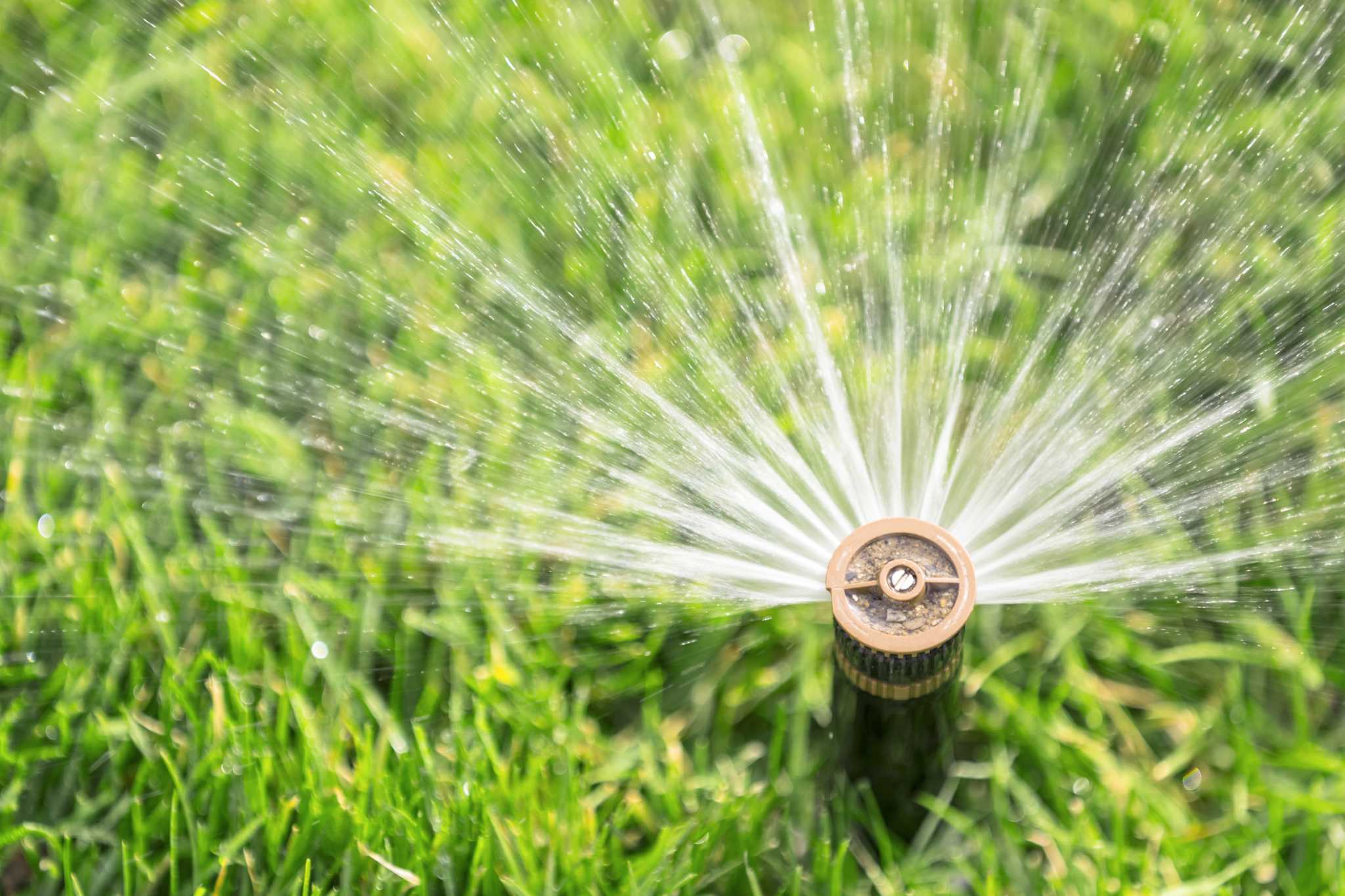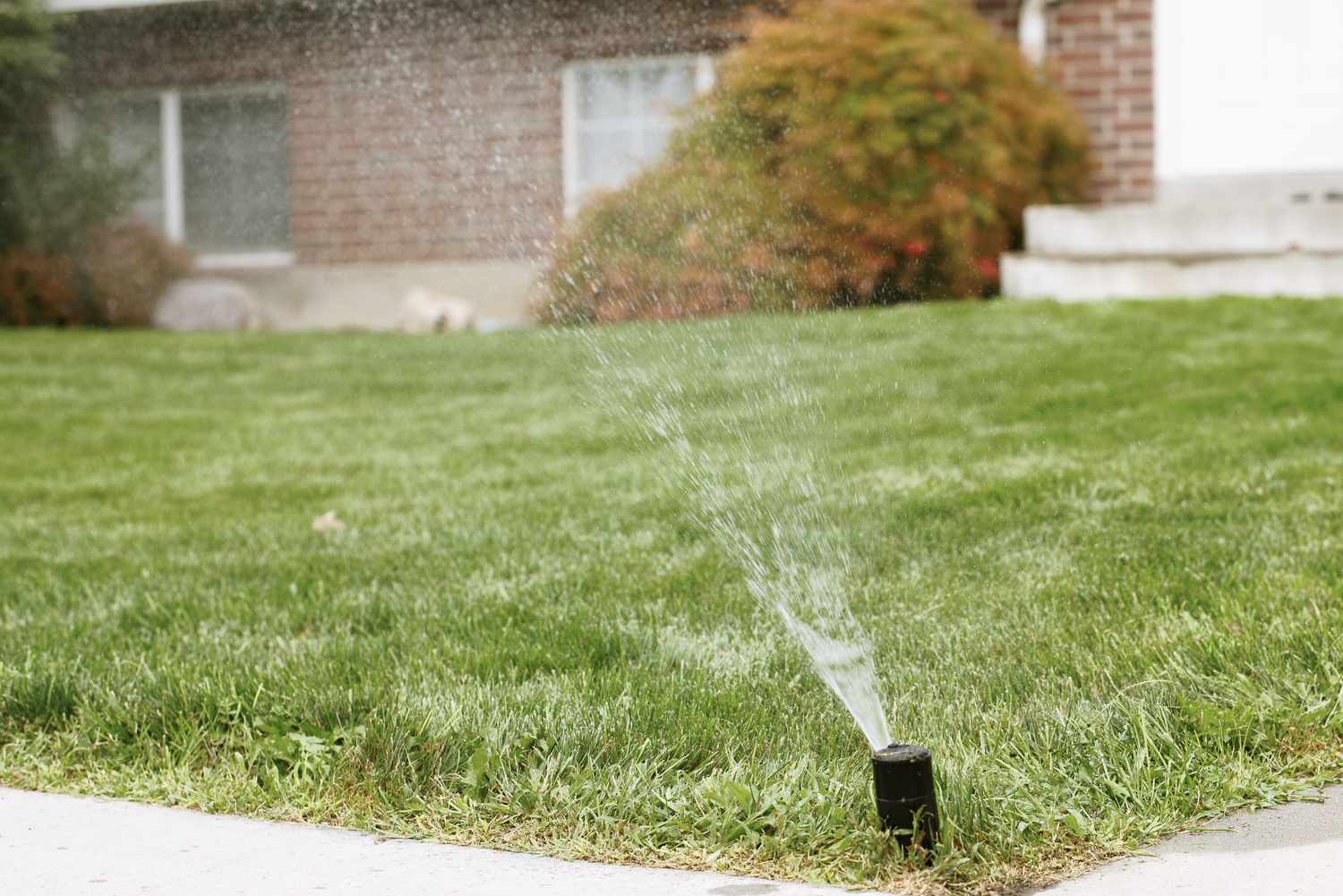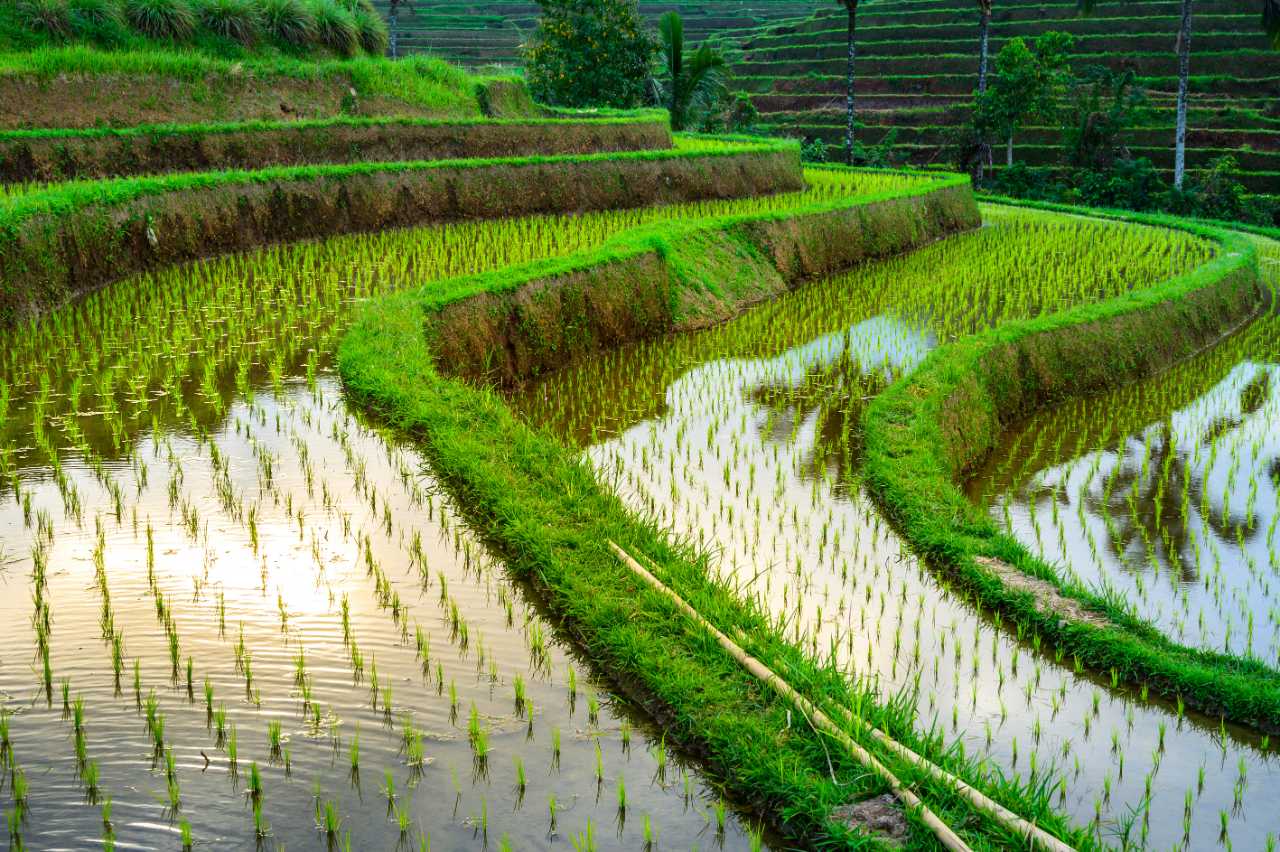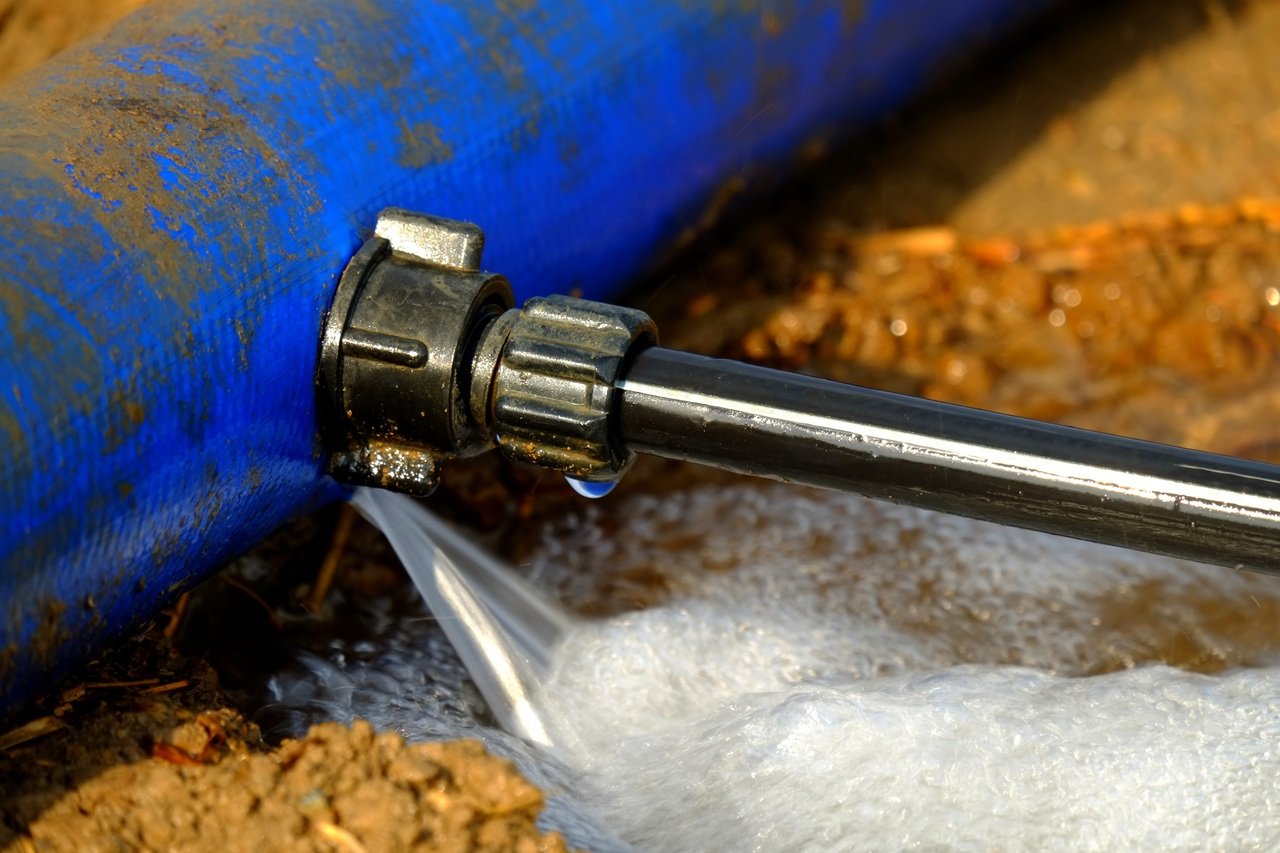Home>Gardening Tips and Tricks>Problem Solving>How To Drain Irrigation System For Winter
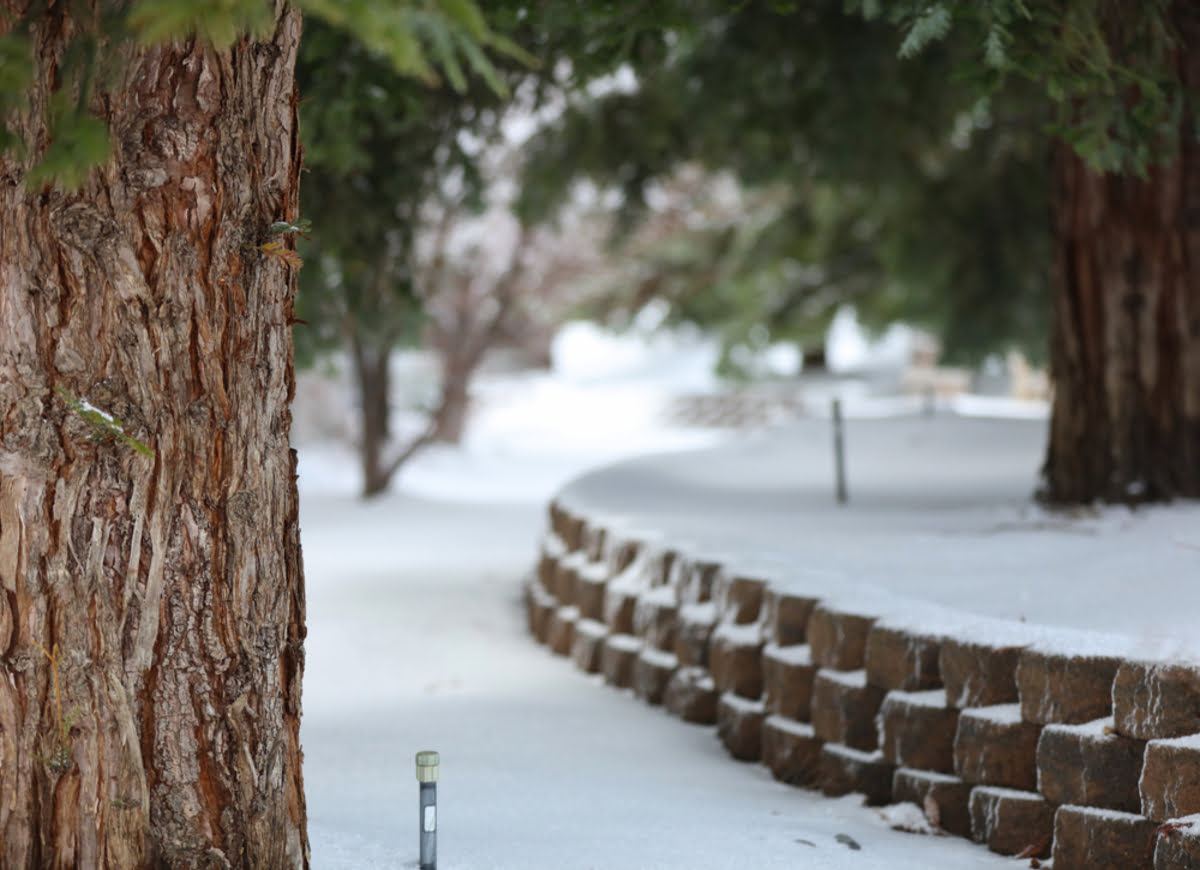

Problem Solving
How To Drain Irrigation System For Winter
Modified: January 22, 2024
Learn how to effectively drain your irrigation system for the winter season with our problem solving tips. Ensure a hassle-free and well-maintained system throughout the cold months.
(Many of the links in this article redirect to a specific reviewed product. Your purchase of these products through affiliate links helps to generate commission for Chicagolandgardening.com, at no extra cost. Learn more)
Table of Contents
Introduction
As winter approaches, preparing your irrigation system for the cold months is essential to prevent damage caused by freezing temperatures. Properly draining your irrigation system ensures that no water remains in the pipes, reducing the risk of burst pipes or costly repairs. While it may seem like a complex task, with a few simple steps, you can effectively drain your irrigation system and protect it during the winter season.
In this article, we will guide you through the process of draining your irrigation system for winter. By following these steps, you can ensure that your system remains in optimal condition and is ready for use when the warmer months return.
It’s important to note that the specific steps may vary depending on the type of irrigation system you have, such as a sprinkler system or a drip irrigation system. Be sure to consult the manufacturer’s instructions or seek professional advice if you are unsure about any aspect of the process.
Now let’s dive into the steps required to drain your irrigation system for winter!
Step 1: Turn off the Water Supply
The first step in draining your irrigation system for winter is to turn off the water supply. Locate the main water shut-off valve for your irrigation system, which is typically near the water source or your irrigation controller.
Begin by shutting off the main water supply to your irrigation system. This will prevent any additional water from flowing into the system while you are in the process of draining it. Turning off the water supply is essential to ensure a thorough removal of water from the pipes.
If you have a manual shut-off valve, turn it clockwise until it is fully closed. Make sure to check that the valve is tightly closed to prevent any water from entering the system. For systems with an automated shut-off, consult your irrigation controller’s manual or follow the manufacturer’s instructions to turn off the water supply.
By shutting off the water supply, you will effectively stop the flow of water through your irrigation system, allowing you to proceed with the next steps of draining the remaining water from the pipes.
It’s important to note that some irrigation systems may have multiple zones or sections. In this case, you may need to locate and shut off individual zone valves for a more precise shutdown of the water supply.
Once you have successfully turned off the water supply, you can proceed to the next step of the process.
Step 2: Open the Valves
After turning off the water supply, the next step in draining your irrigation system for winter is to open the valves. This step is crucial in allowing the water to drain properly from the system.
Start by locating the drain valves on your irrigation system. These valves are typically located at the lowest points of the system, allowing water to flow out easily.
Once you have located the drain valves, slowly open them in a counterclockwise direction. This will create a pathway for the water to escape from the pipes. By opening the valves, you are relieving any pressure in the system and facilitating the drainage process.
It’s important to note that some irrigation systems may have multiple drain valves, especially if there are different zones or sections. Open all the drain valves to ensure thorough draining of the entire system.
As you open the drain valves, you may notice water starting to flow out. Allow the water to drain completely from the system. Depending on the size of your irrigation system, this process may take some time. Be patient and allow enough time for all the water to drain out.
While draining the water, it can be helpful to keep an eye on the flow to ensure that there are no obstructions or clogs in the system. If you notice any blockages, it may be necessary to clear them before proceeding.
Once all the water has drained out and no more water is flowing from the drain valves, you can move on to the next step of the process.
Step 3: Release Pressure from the System
After opening the drain valves and allowing the water to flow out, the next step in draining your irrigation system for winter is to release any remaining pressure from the system. This step helps to ensure that all water is completely removed from the pipes.
Start by turning off the irrigation controller or timer. This will prevent any accidental activation of the system while you are working on draining it. Make sure that the controller is powered off and no scheduled watering is set for the winter season.
Next, locate any pressure relief valves or backflow preventers in your irrigation system. These valves are designed to release excess pressure and should be opened to allow any trapped water to escape.
If your system has a pressure relief valve, carefully open it using a screwdriver or a valve key. Slowly turn the valve counterclockwise to relieve the pressure. Be cautious while opening the valve, as it may release a small amount of water or air.
For systems with a backflow preventer, consult the manufacturer’s instructions on how to properly release the pressure. Some backflow preventers have specific valves or test cocks that need to be opened to allow for the release of pressure.
By releasing the pressure from the system, you are ensuring that no water remains trapped in the pipes or components. This step is essential to prevent any potential damage caused by freezing water during the winter months.
Once you have released the pressure, you can proceed to the next step of the process to remove any remaining water from the irrigation system.
Step 4: Remove any Remaining Water
After releasing the pressure from the system, the next step in draining your irrigation system for winter is to remove any remaining water. Although most of the water should have been drained during the previous steps, there may still be some water left in the pipes and components.
Start by using compressed air to blow out any remaining water in the system. If you have access to an air compressor, attach an air hose to the water access point on your irrigation system. Begin by setting the pressure regulator to the recommended PSI for your specific system, which can typically be found in the manufacturer’s manual.
With the air compressor turned on, slowly open each zone valve on your irrigation system, one at a time. This will allow the compressed air to flow through each zone, forcing any remaining water out of the pipes. Keep the zone valves open until you no longer hear any air escaping and there is no visible water coming out of the sprinkler heads or drip emitters.
It’s important to maintain a steady and regulated pressure while blowing out the system. Excessive pressure can cause damage to the pipes or components. If you are unsure of the appropriate PSI or how to use an air compressor, it’s best to consult a professional to avoid any potential mishaps.
If you do not have access to an air compressor, an alternative method is to manually drain the remaining water from the system. This can be done by opening the drain valves again and allowing any residual water to flow out. Additionally, you can use a wet-dry vacuum to suck out any remaining water in the pipes.
By removing the remaining water from the irrigation system, you are minimizing the risk of freezing and potential damage to the pipes and components during the winter season.
Once all the water has been removed, you can proceed to the next step of insulating any exposed pipes in your irrigation system.
Step 5: Insulate Exposed Pipes
After removing all the water from your irrigation system, it’s important to take preventive measures by insulating any exposed pipes. This extra layer of insulation will provide added protection against freezing temperatures during the winter months.
Start by identifying any above-ground pipes or components in your irrigation system that are vulnerable to freezing. These are typically located above the ground surface, such as outdoor faucets, above-ground valve boxes, or any exposed pipes.
There are several insulation options available, including pipe insulation sleeves, foam insulating tape, or fiberglass insulation. These materials can be found at your local hardware or home improvement store.
Wrap the chosen insulation material tightly around the exposed pipes, ensuring that there are no gaps or openings. Pay special attention to areas where the pipes connect to valves or fittings, as these areas are more prone to freezing.
If you have outdoor faucets or spigots, consider using faucet covers. These covers are designed to fit over outdoor faucets and provide additional insulation and protection from freezing temperatures.
Additionally, if you have an above-ground valve box, make sure it is properly insulated. You can use insulation sleeves or foam board insulation to surround the valve box, providing an extra layer of protection.
By insulating exposed pipes and components, you are minimizing the risk of freezing and potential damage to the irrigation system. This step is crucial in ensuring the longevity and functionality of your system.
After insulating the exposed pipes, you can move on to the final step of storing your equipment and materials properly for the winter season.
Step 6: Store Equipment and Materials Properly
Once you have drained and insulated your irrigation system, the final step in preparing for winter is to store your equipment and materials properly. This will help protect them from the harsh weather conditions and ensure that they are in good condition for the next growing season.
Start by gathering all the equipment used in the irrigation system, such as sprinkler heads, drip emitters, and hoses. Thoroughly clean and dry them to remove any dirt or debris. Inspect each component for any signs of damage or wear and tear. Replace any damaged parts before storing them.
Next, find a suitable space to store your equipment and materials. Ideally, this should be a clean, dry, and temperature-controlled area, such as a garage or a storage shed. Make sure the area is free from pests and rodents that could potentially damage the equipment.
If you have any hoses, drain the water completely from them and then coil them neatly. Store them in a cool, dry area to prevent any cracking or damage due to freezing temperatures.
For smaller irrigation components like sprinkler heads or drip emitters, it’s best to store them in a labeled container or a plastic bag. This will keep them organized and protect them from dust and moisture.
If you have a controller or timer for your irrigation system, consider removing the batteries and storing them separately. Extreme cold temperatures can affect battery performance, so keeping them in a controlled environment will help extend their lifespan.
Lastly, take stock of any chemicals or fertilizers that you used in your irrigation system. Check the manufacturer’s instructions for proper storage guidelines. Store them in a safe, dry place, away from extreme temperatures and out of reach of children or pets.
By storing your equipment and materials properly, you are ensuring that they remain in good condition and ready for use when the next irrigation season arrives.
With these steps, you have successfully drained and winterized your irrigation system. Following these guidelines will help protect your system from potential damage and ensure its optimal performance when spring returns.
Conclusion
Preparing your irrigation system for winter is crucial to prevent damage caused by freezing temperatures. By following the steps outlined in this article, you can effectively drain and winterize your system, ensuring its longevity and functionality.
Remember to start by turning off the water supply and opening the valves to allow the water to drain from the system. Release any remaining pressure and remove the excess water using compressed air or by manually draining the pipes. Insulate any exposed pipes to protect them from freezing temperatures, and store your equipment and materials properly for the winter.
By taking these preventive measures, you can minimize the risk of burst pipes, costly repairs, and potential downtime when spring arrives. Regular maintenance and proper winterization will prolong the lifespan of your irrigation system, saving you time, money, and headaches in the long run.
If you are unsure about any step or have a complex irrigation system, it’s always best to consult a professional or refer to the manufacturer’s instructions. They can provide guidance specific to your system’s needs.
Protecting your irrigation system during the winter months is an investment in its longevity and a key component of maintaining a healthy and beautiful landscape. So, take the time to follow these steps and rest easy knowing that your irrigation system will be ready to go when the warmer weather returns.
